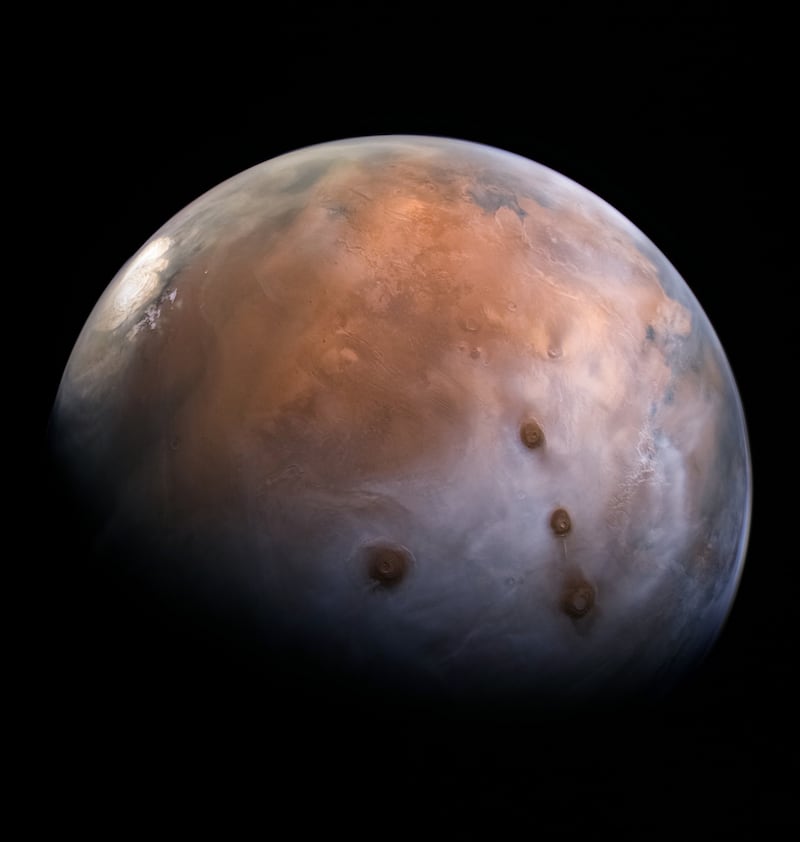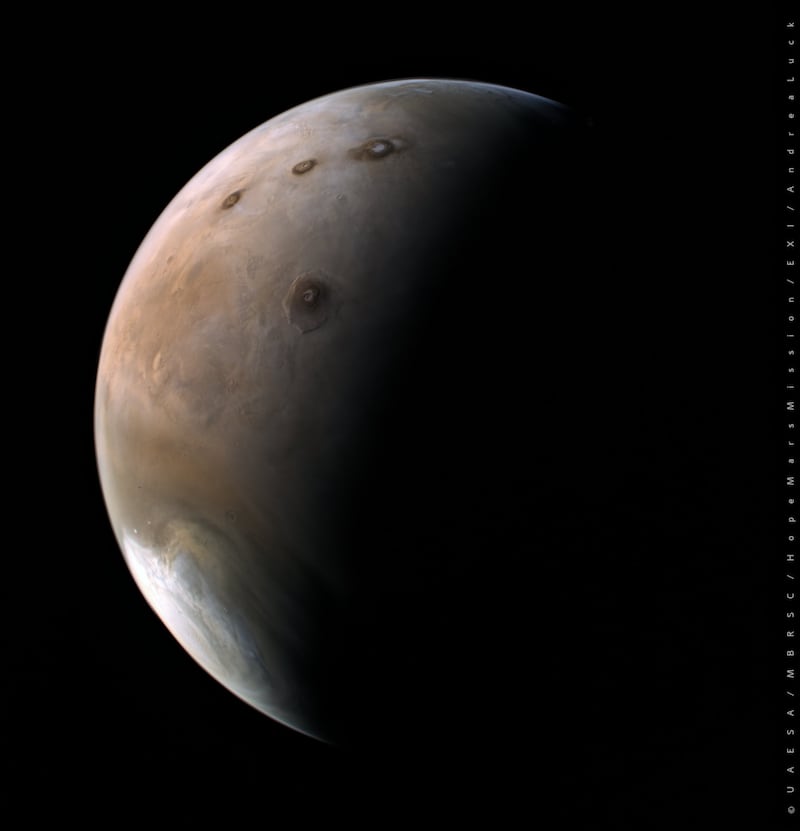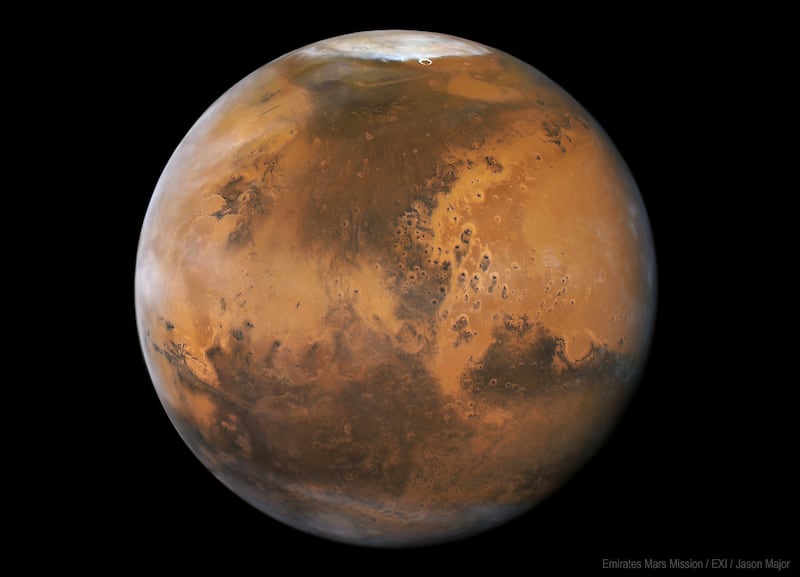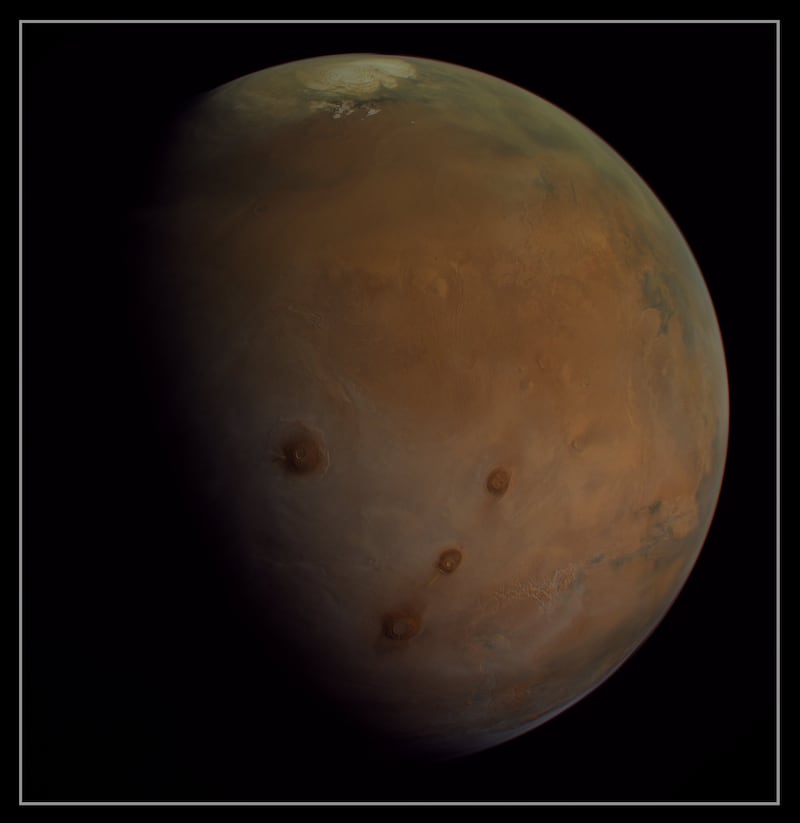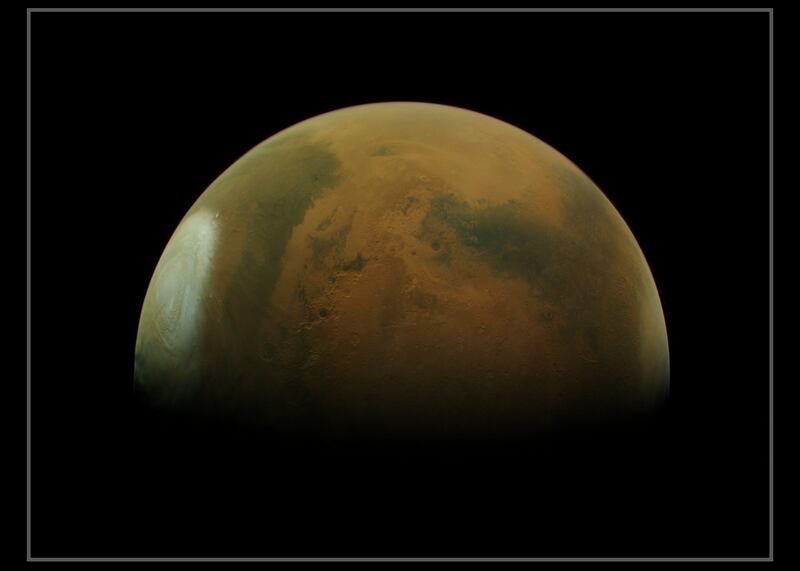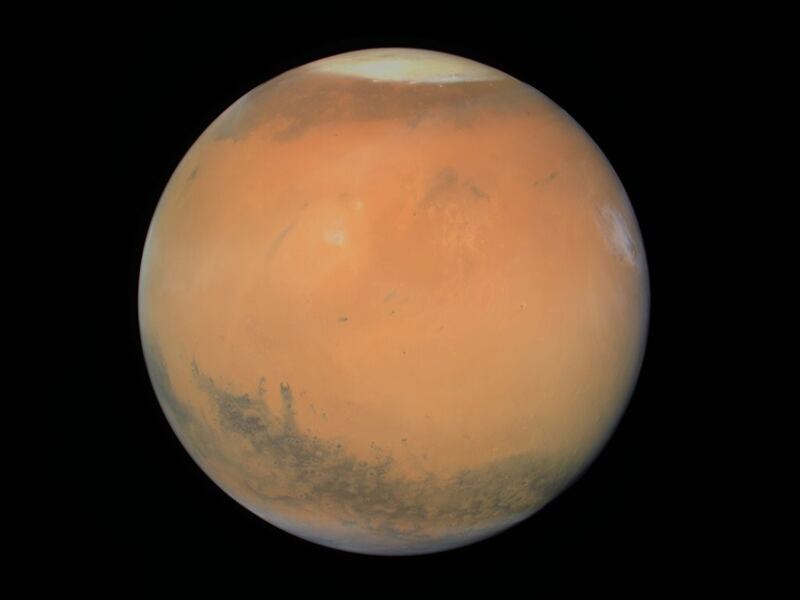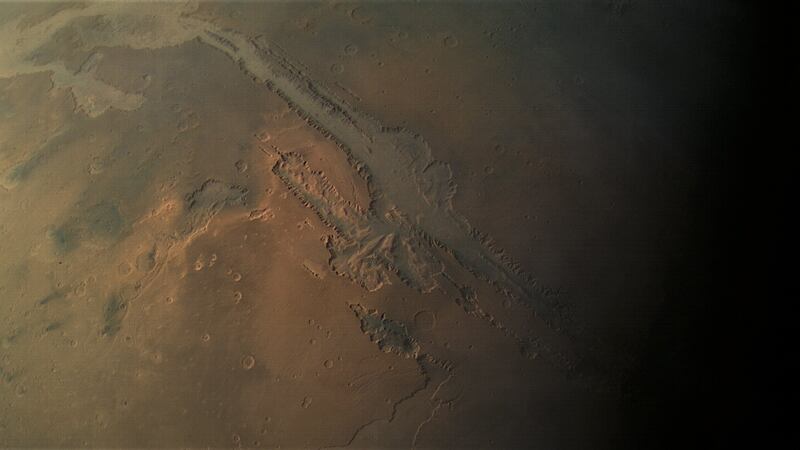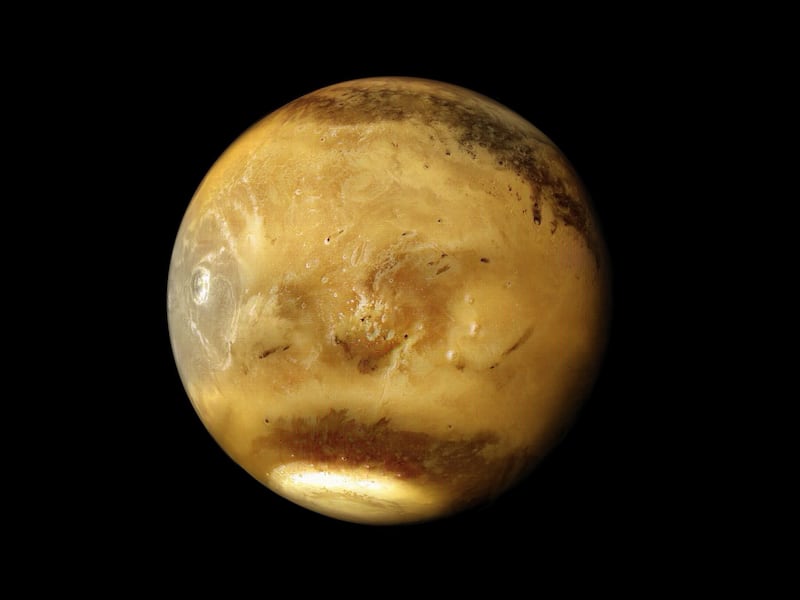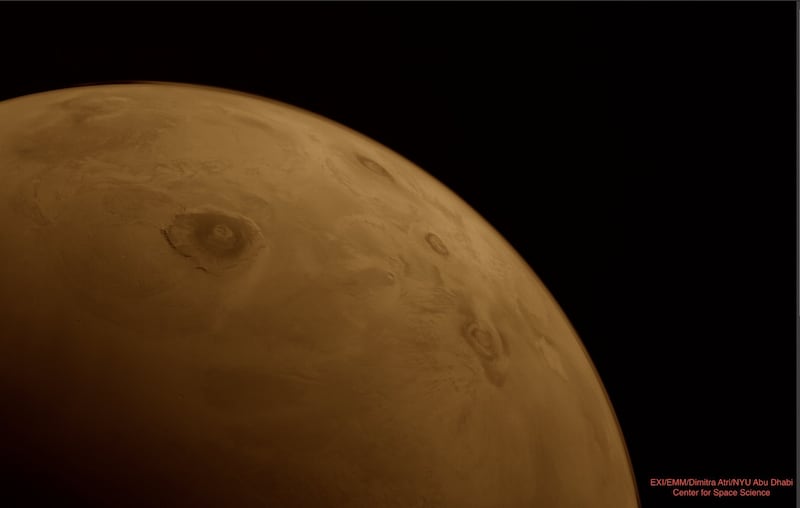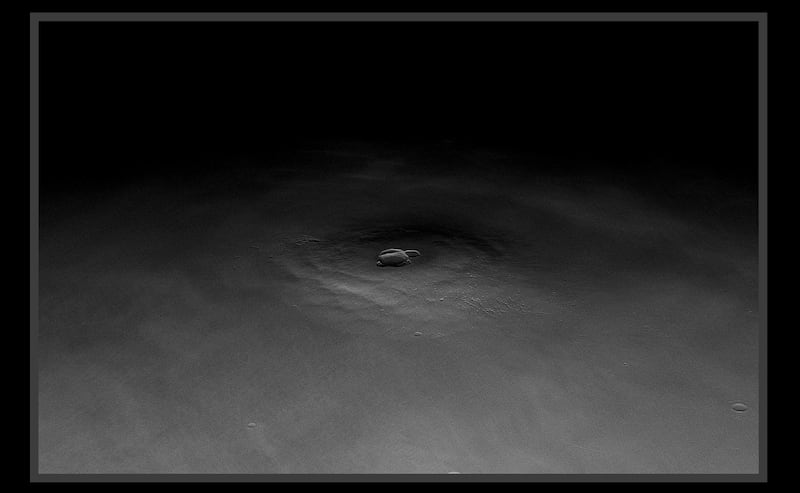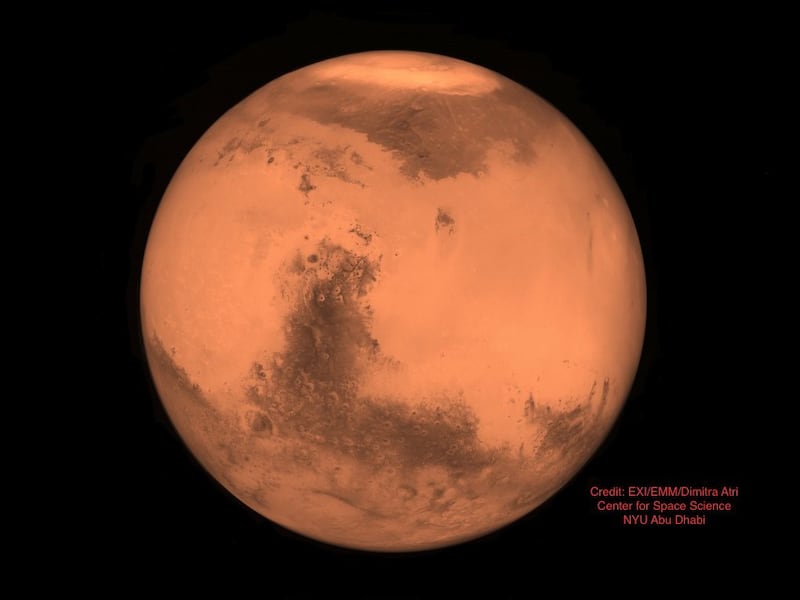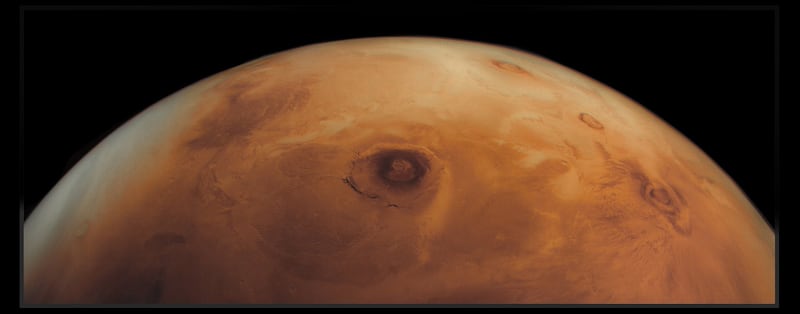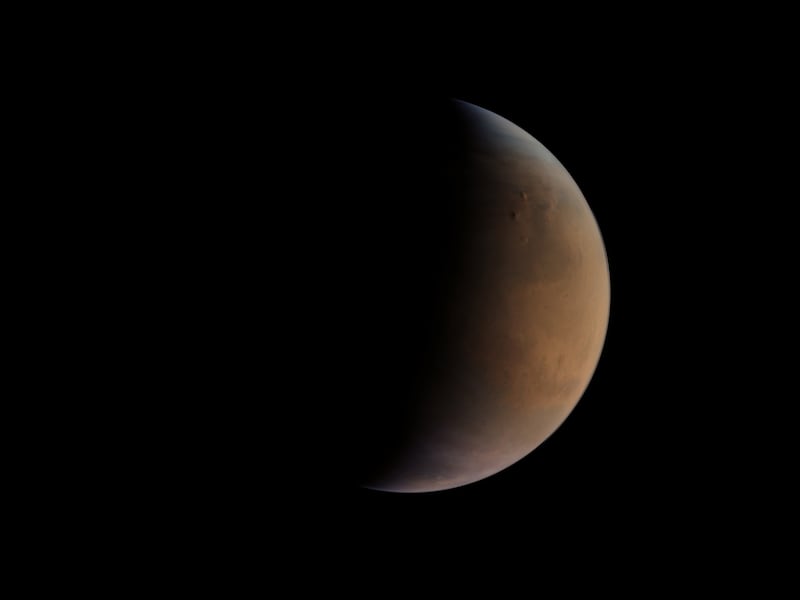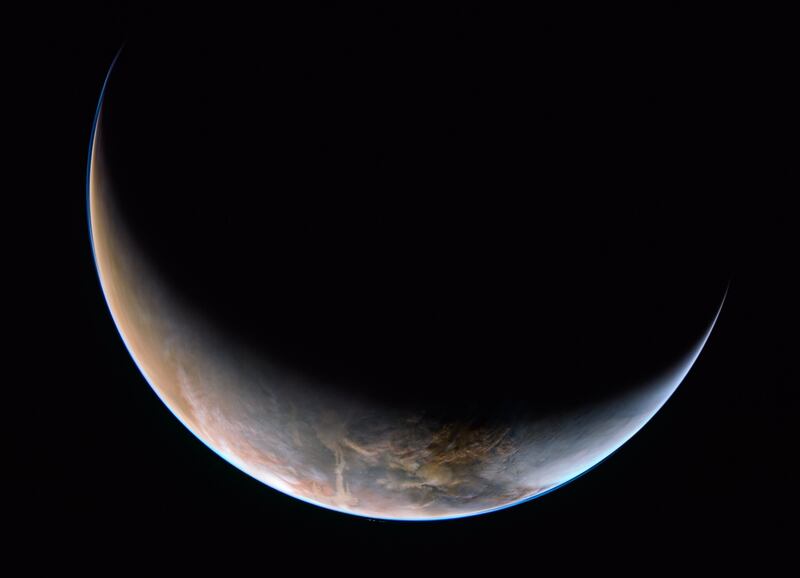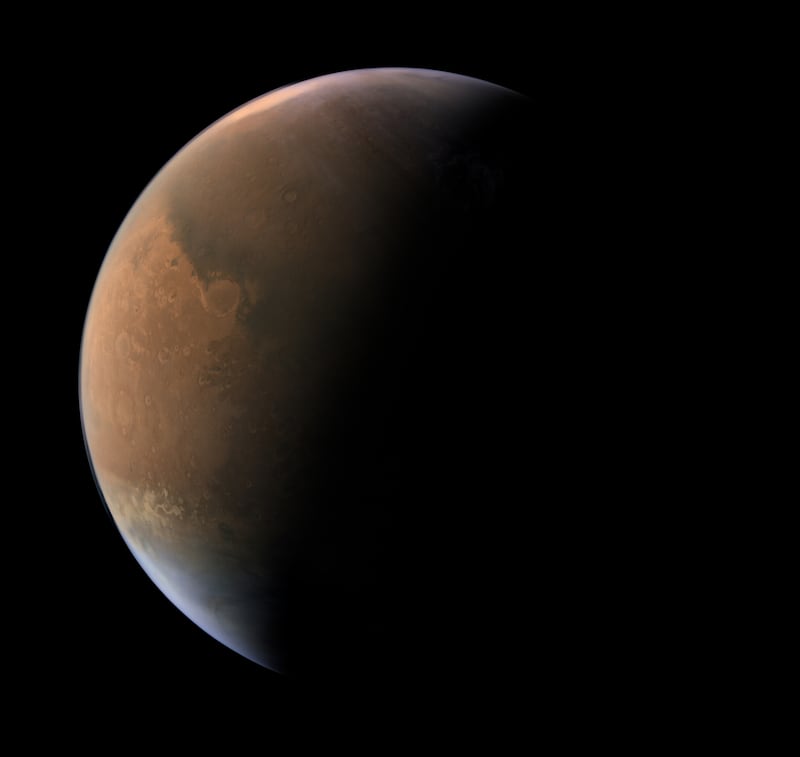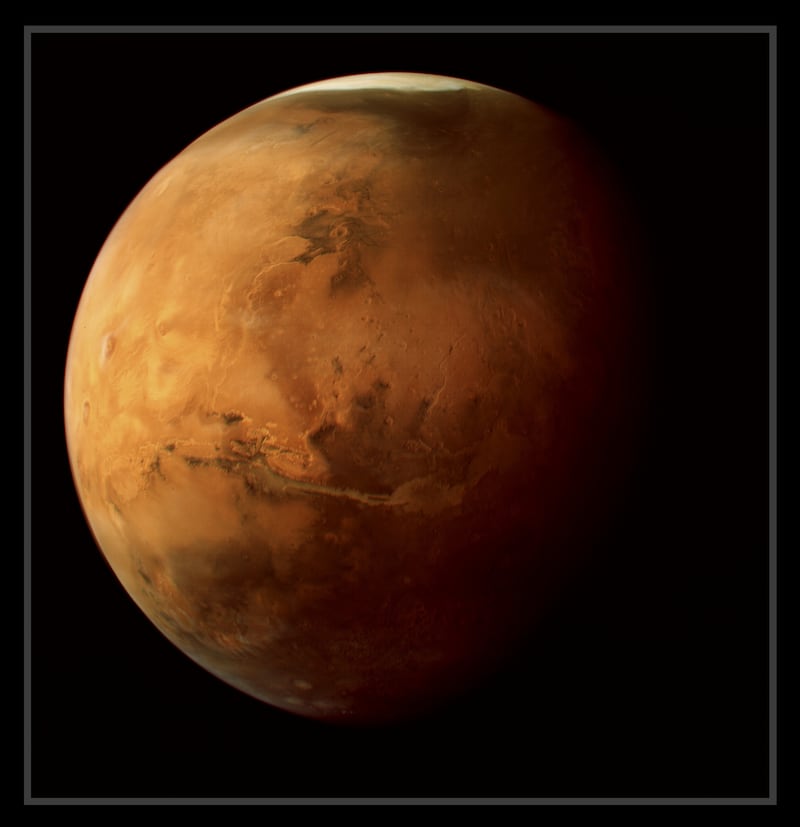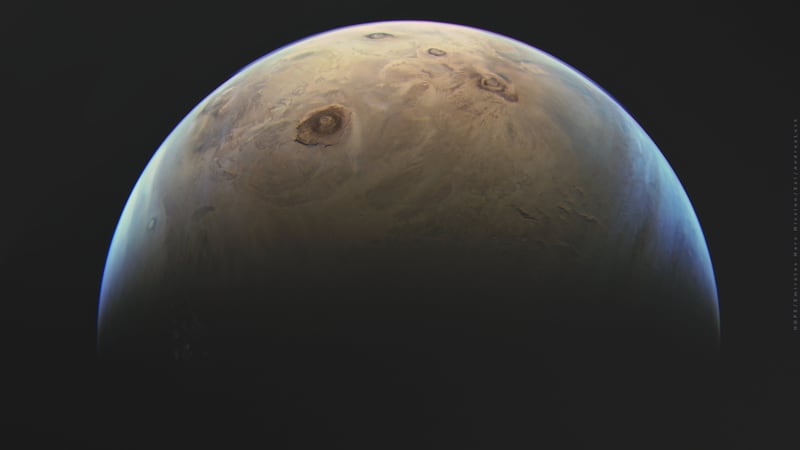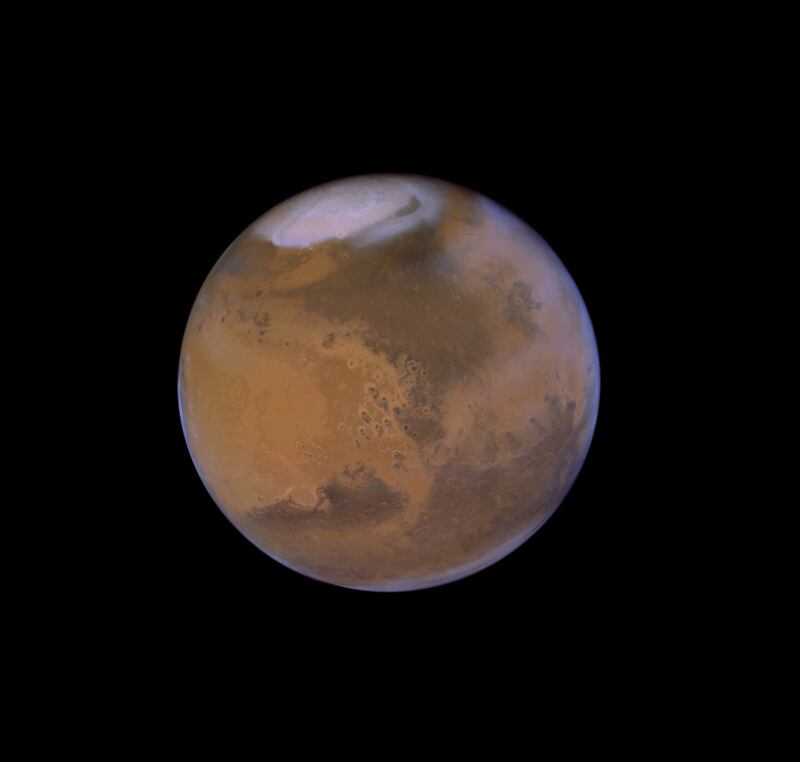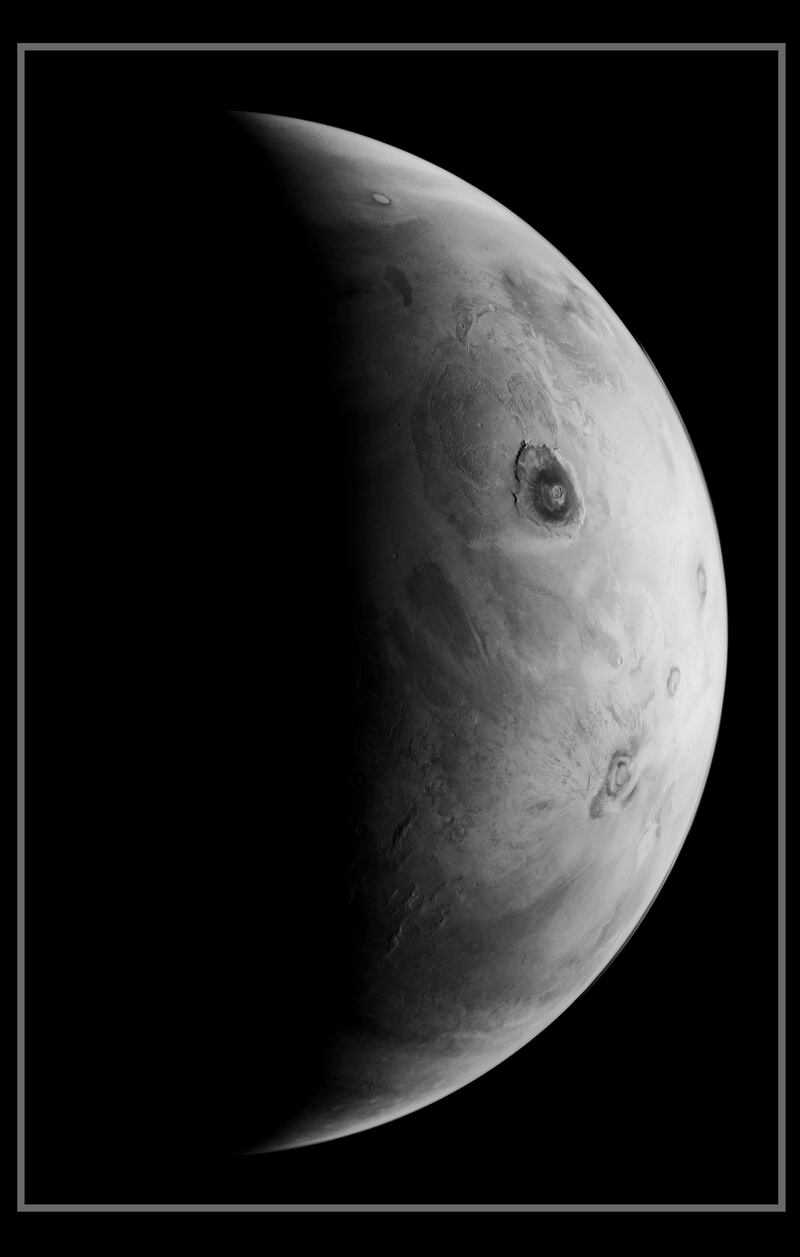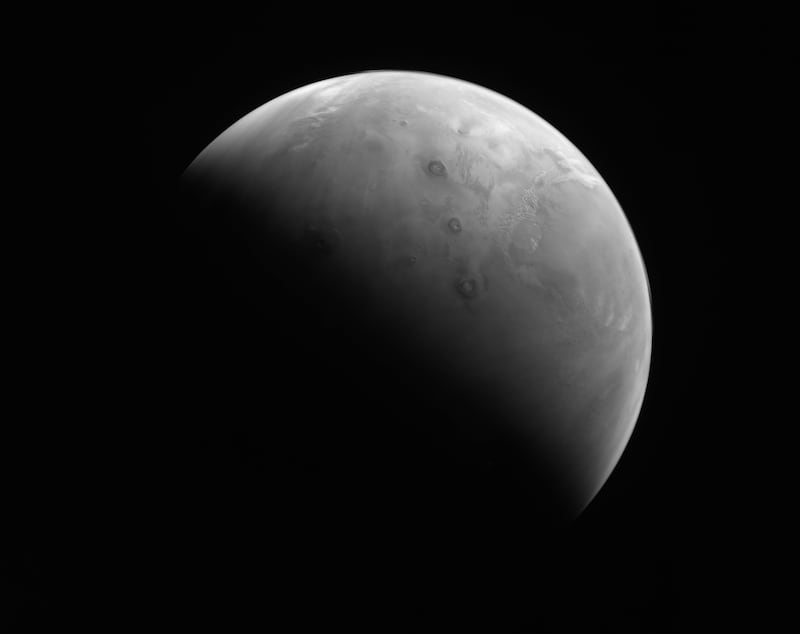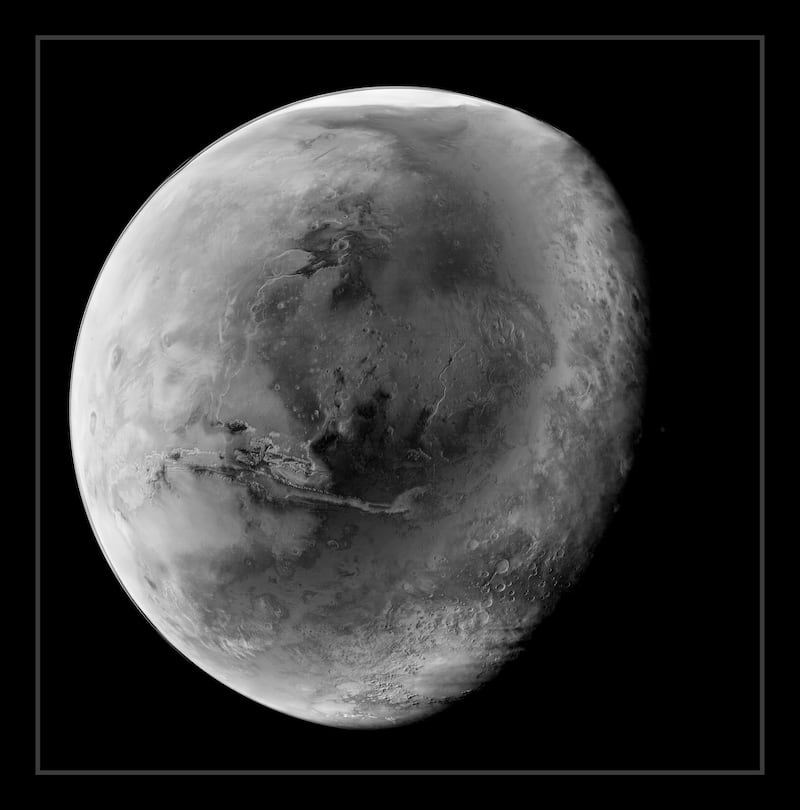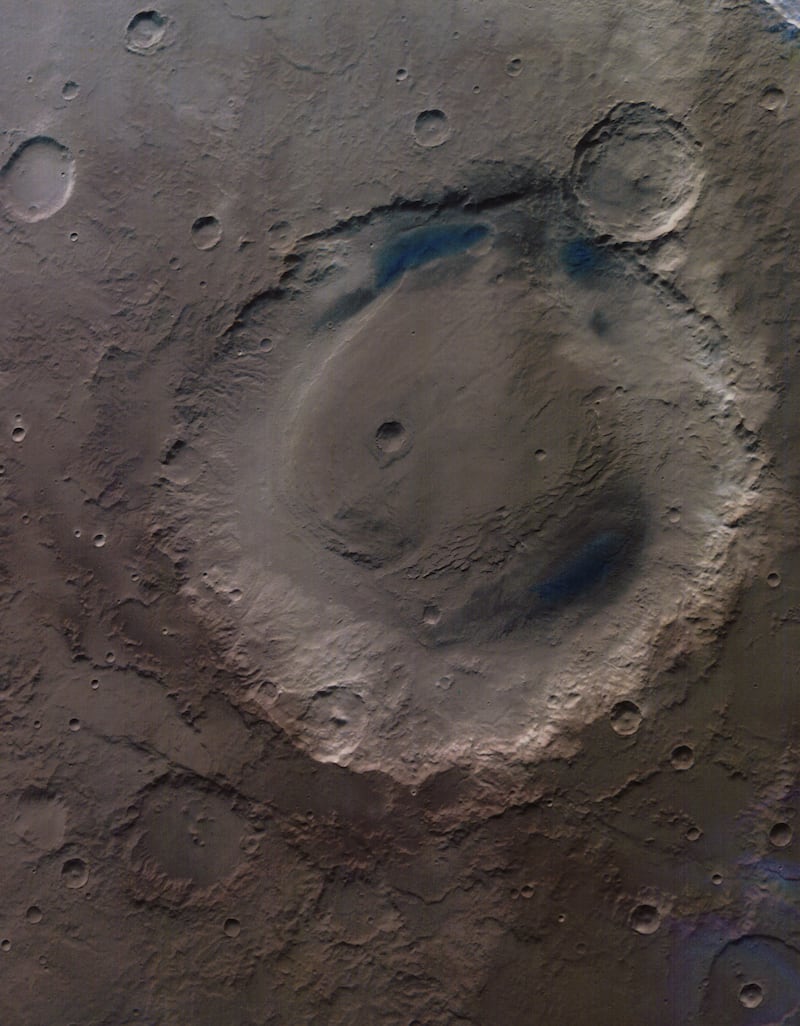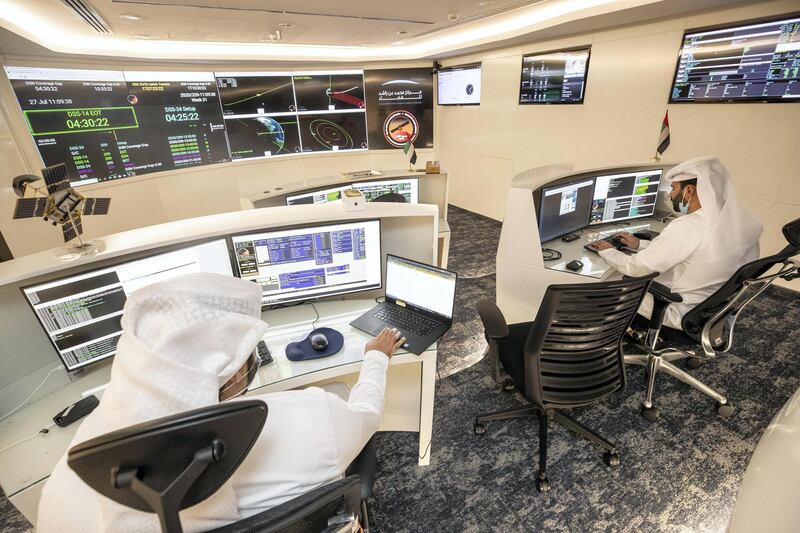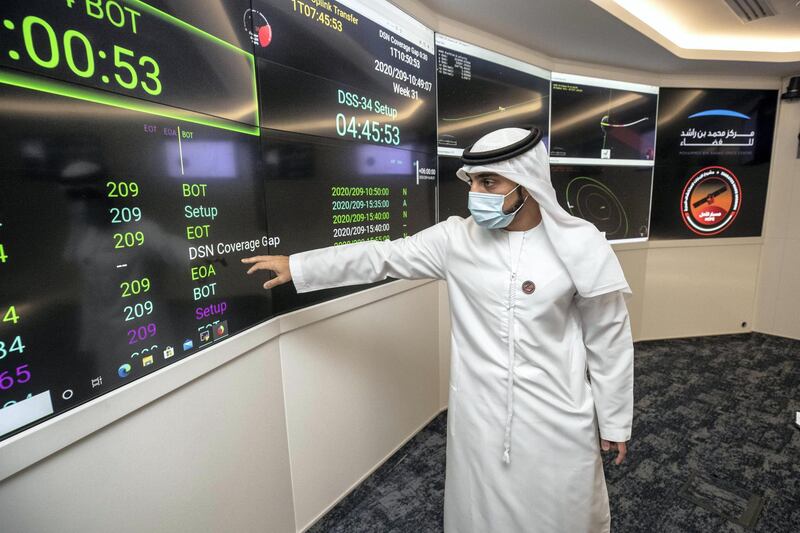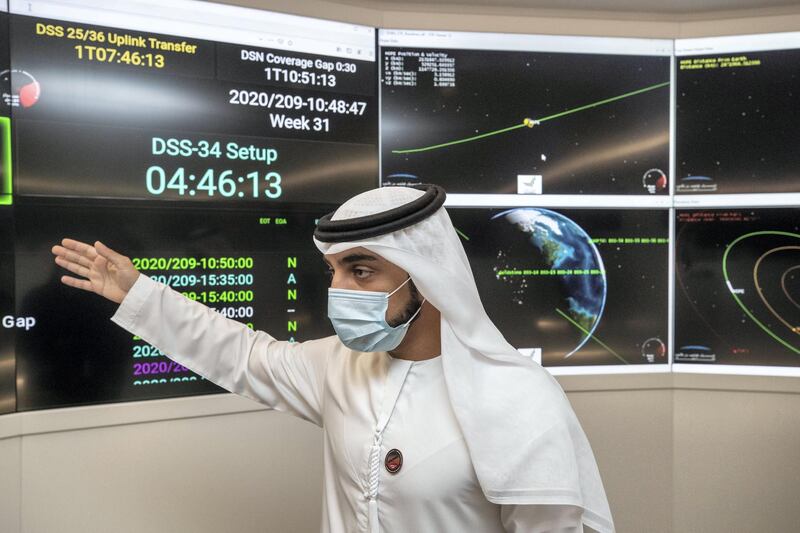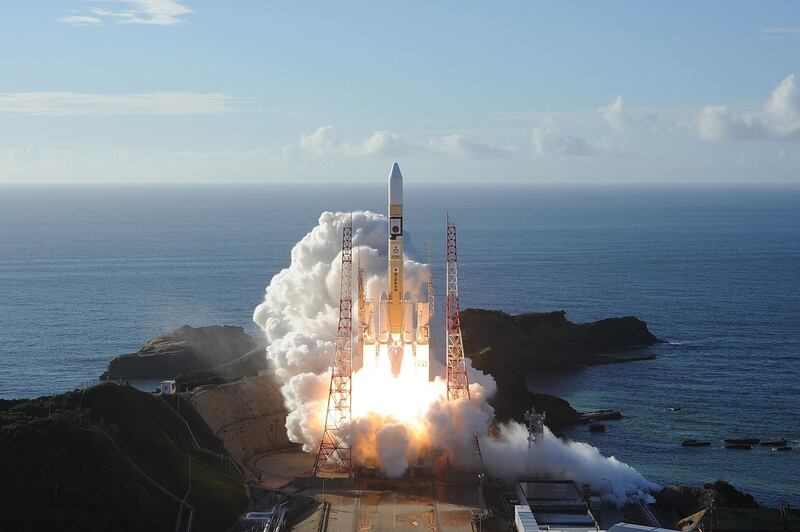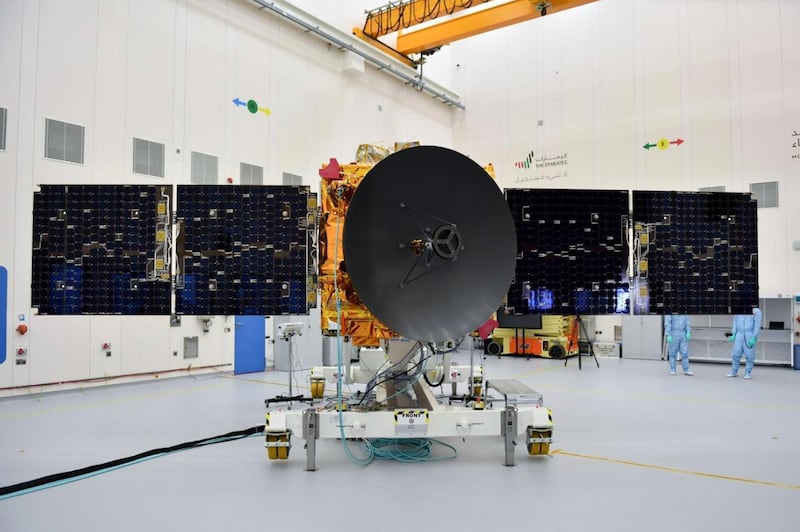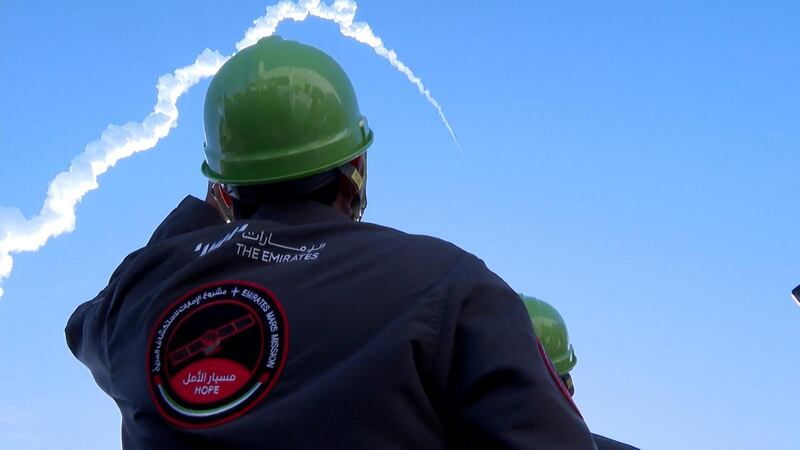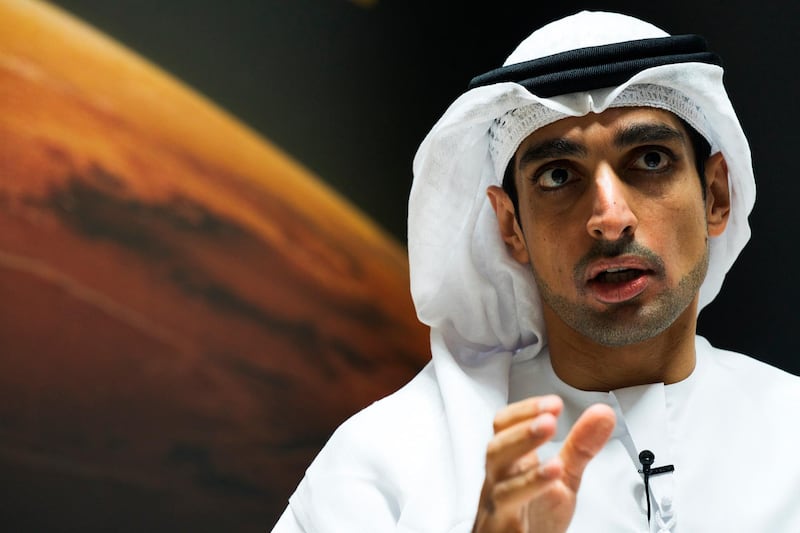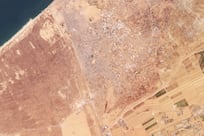A UAE spacecraft that reached Mars's orbit last year has sent back thousands of images that show the stunning geographical features of the mysterious red planet.
From views of the elusive auroras that have puzzled scientists to enormous volcanoes visible from space, the Hope orbiter has recorded plenty of images since it arrived on February 9, 2021.
More than 100 gigabytes of scientific data captured by the spacecraft’s three instruments has already been released to the public, including readings on the planet’s atmospheric conditions.
It is the first successful interplanetary mission by an Arab country, paving the way for the Emirates to take on even more ambitious projects.
The National highlights some of the most remarkable images captured by the spacecraft.
First image by Hope
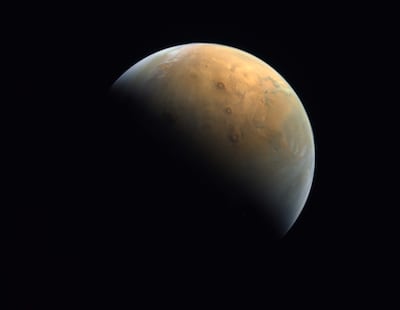
Less than a week after Hope reached Mars, it beamed back its first image of the planet.
It showed the Tharsis Montes region, an area that has three large shield volcanoes, in sharp detail.
The Olympus Mons, the largest volcano in the solar system, at sunrise was also visible.
Captured 24,700 kilometres above the surface of Mars, the North Pole of the planet can be seen in the upper left of the image.
Ice clouds are visible over the southern highlands and the Alba Mona Volcano.
Tectonic fissures
On March 15, the spacecraft captured an image of Cerberus Fossae, a series of fissures that formed when the crust was pulled apart in the region.
The fracture system stretches more than 1,000 kilometres across the Martian surface.
It is a tectonically and volcanically active region that experiences Marsquakes.
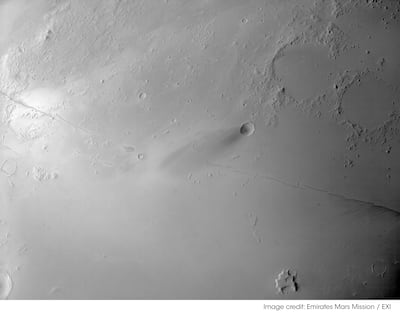
It is believed the fractures could be related to the nearby volcanic systems, such as Elysium and Tharsis.
Some experts have said these fractures may have been the source for catastrophic releases of groundwater, triggered by volcanic activity.
Hope captured the image when it was closest to Mars’s planetary surface.
Largest mountain in solar system
The spacecraft offered a detailed look at Olympus Mons a few weeks after reaching Mars.
Taken from 13,007km above the planet, the image shows the largest volcano in the solar system in stunning detail.
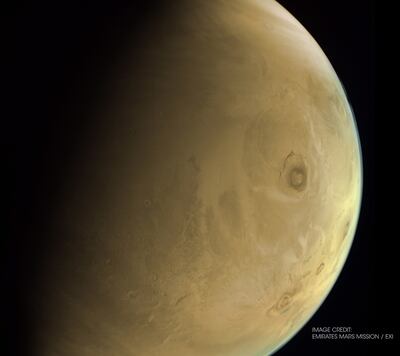
It was first shared by Sheikh Hamdan bin Mohammed, Crown Prince of Dubai, on his social media accounts.
“Olympus Mons … highest peak in our solar system. Almost three times the height of Mount Everest. Taken by Hope Probe at 13,000km above Mars surface,” he wrote.
The volcano is located in the Tharsis region of Mars and measures 642 kilometres in diameter.
Aurora on Mars
In April, Hope captured the discrete aurora on Mars – similar to the Northern Lights on Earth.
It was the first time such clear observations had been made. Scientific images were released at the time, along with an artist’s impression of what the aurora could look like on Mars.
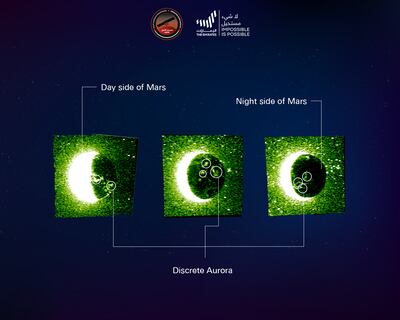
The rare phenomenon occurs around Mars’s irregular crustal magnetic field and is created when energetic electrons in the upper atmosphere collide with gas molecules in the atmosphere.
This causes ionisation, dissociation of molecules and emission of photons – causing the 'dancing lights’.
There are two other types of aurora that have been documented before, the diffuse and the proton.
Bright hemisphere
Hope took photos of a fully illuminated hemisphere of Mars.
These were similar to observations carried out regularly by weather satellites around Earth.
Captured 20,260km above the planetary surface, the image was taken when it was late spring in its northern hemisphere.
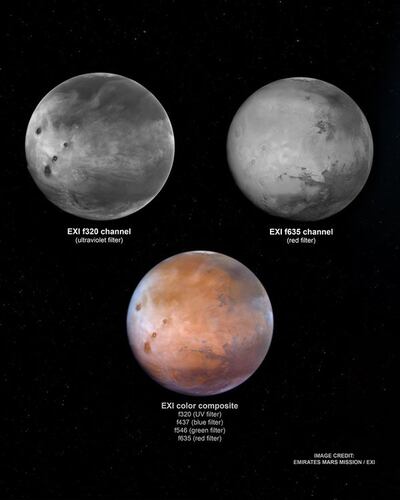
Mars’ northern and southern hemisphere are different from each other. The northern part has non-volcanic and flat lowlands, while the south hosts volcanoes that are scattered throughout on high land.
